Abstract
In a conditional discrimination procedure, samples appeared in a center key, and comparisons appeared in two of four outer keys. The location of comparison keys varied from trial to trial. Separate learning curves for each of the six possible pairs of comparison keys were plotted in a signal-detection space, revealing different patterns of progress on each pair. Also, when learned conditional discriminations were disrupted, pairs of keys differed in their patterns of disruption. Varying the location of comparison stimuli among six different pairs of keys had not eliminated key position as a controlling aspect of the stimuli. The variations simply increased the number of stimulus compounds--key position and experimental stimuli--that the subject learned. Plotting conditional-discrimination learning curves in a signal-detection space reveals relations among hits, false alarms, accuracy, and comparison preference that help to define a subject's progress.
Full text
PDF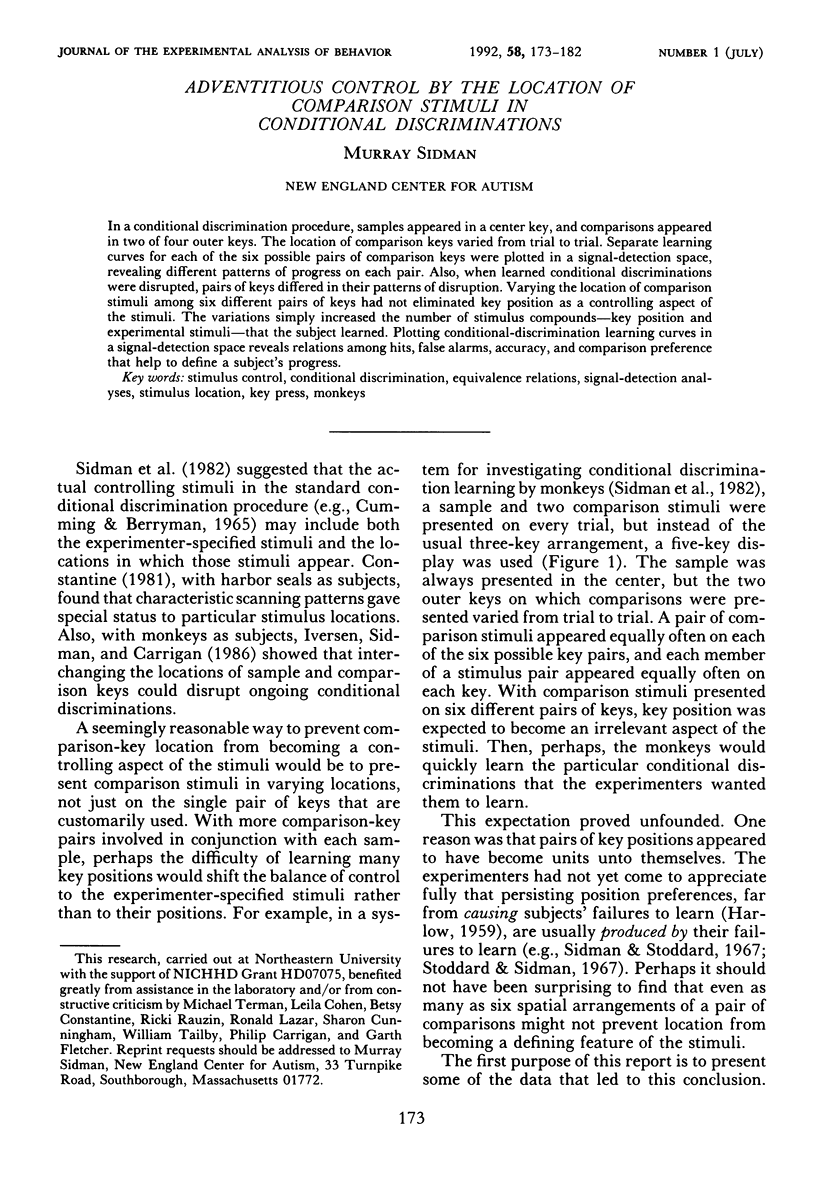

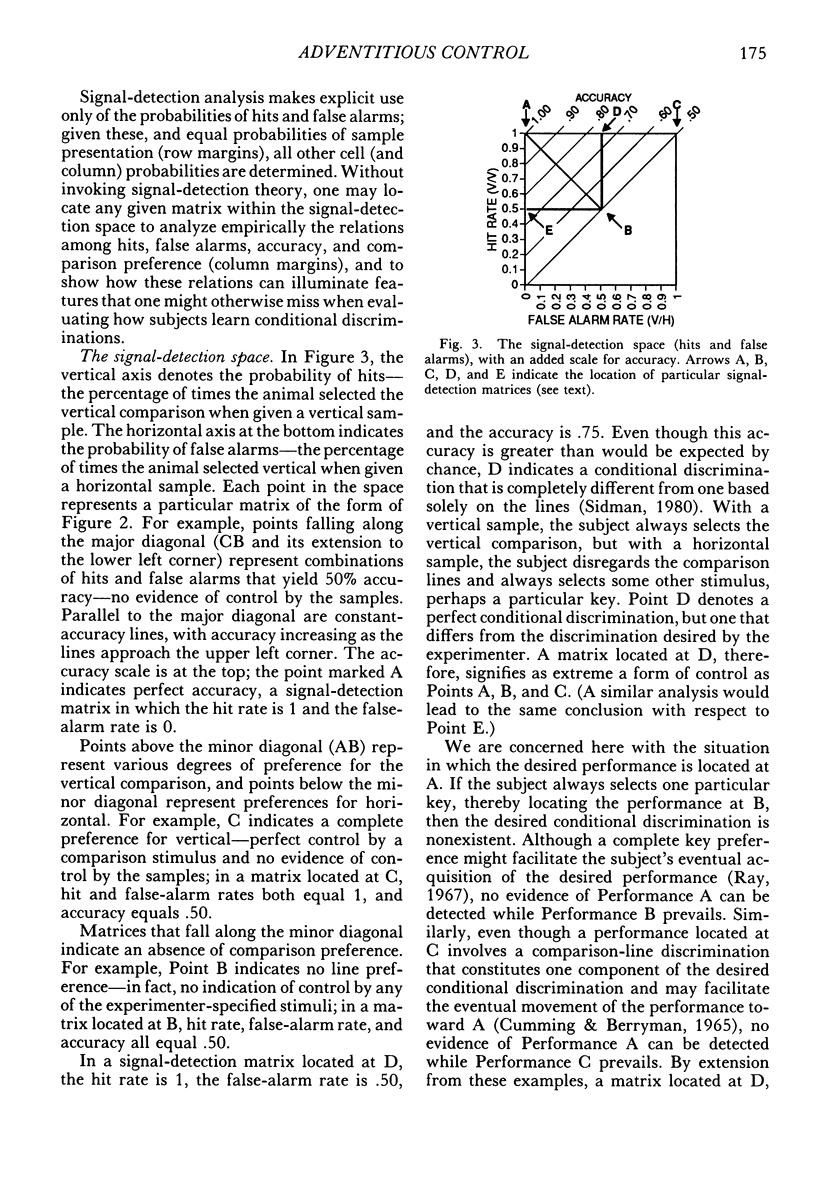
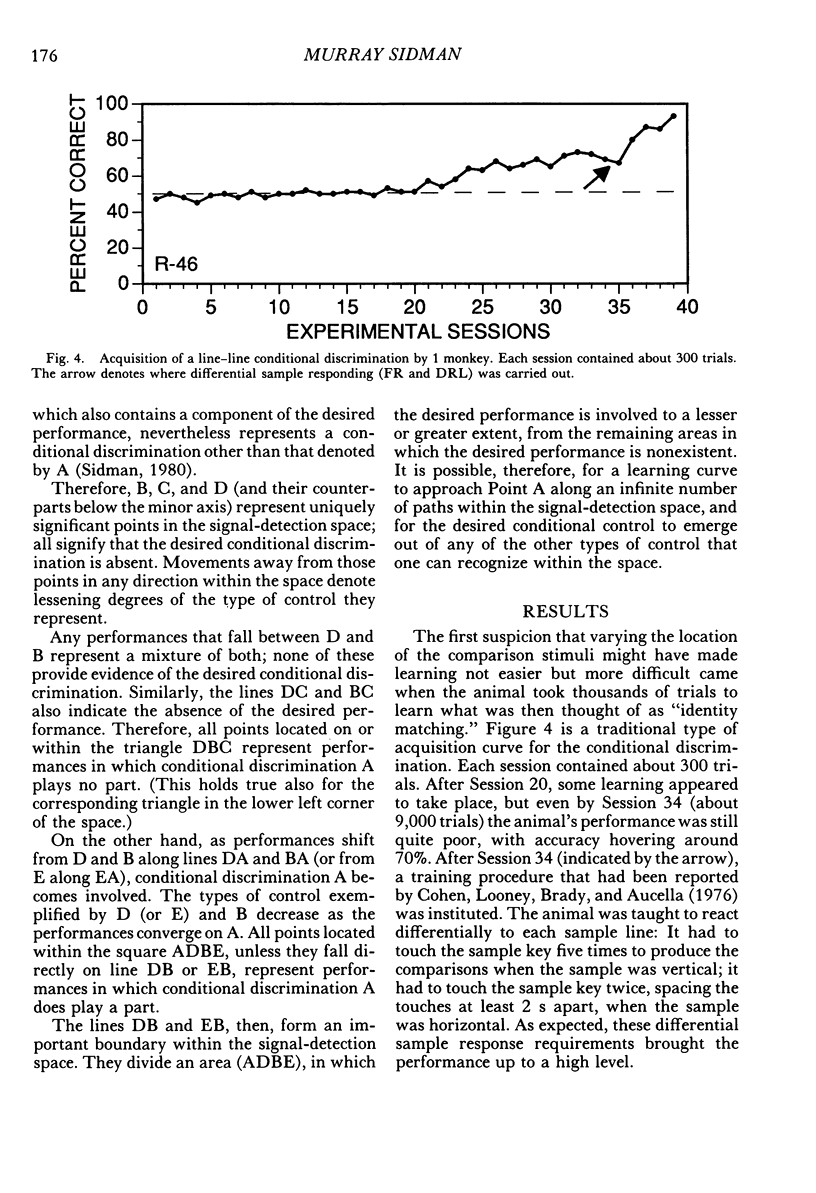
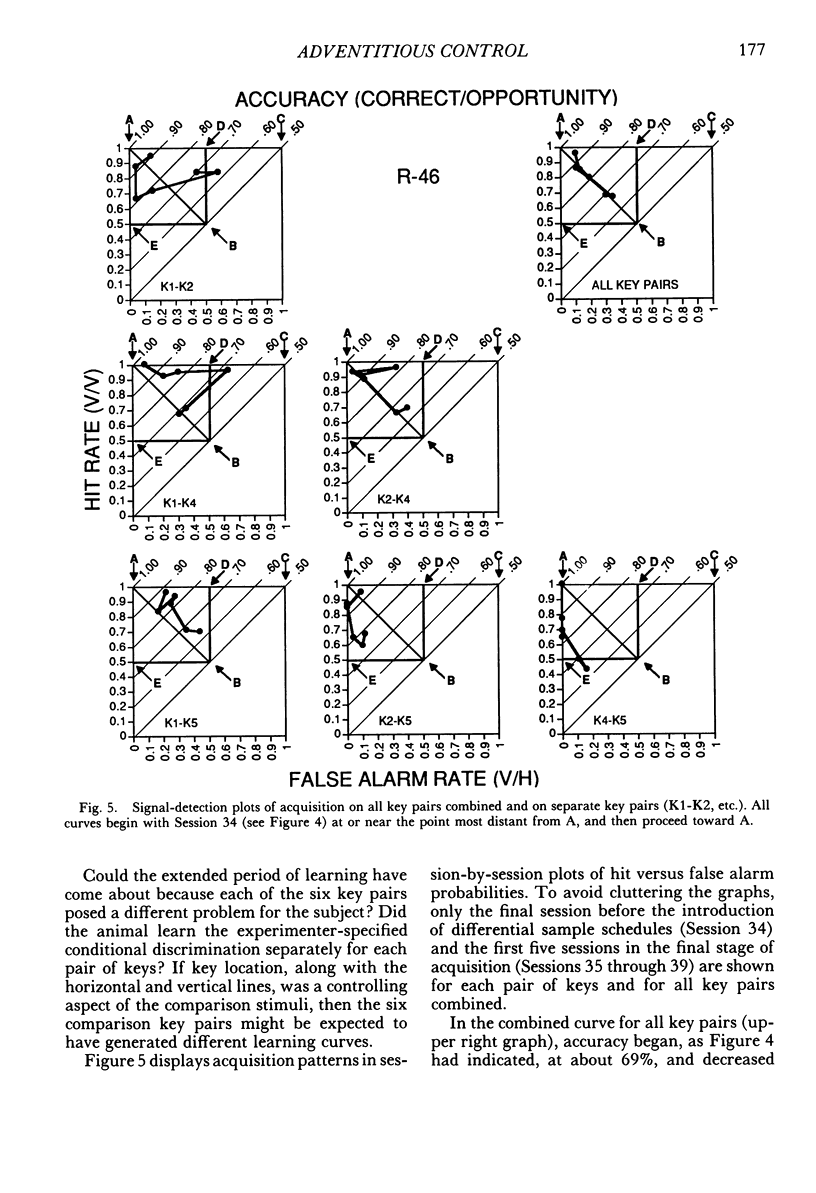
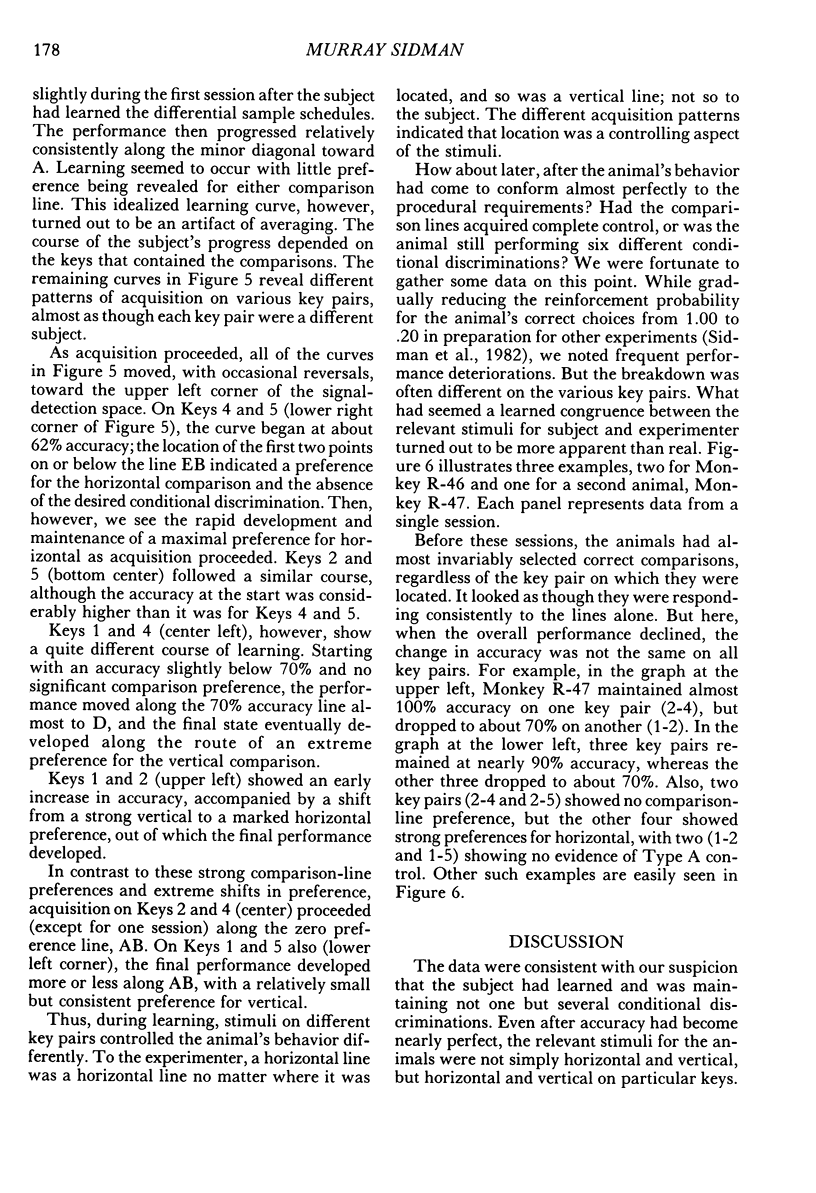
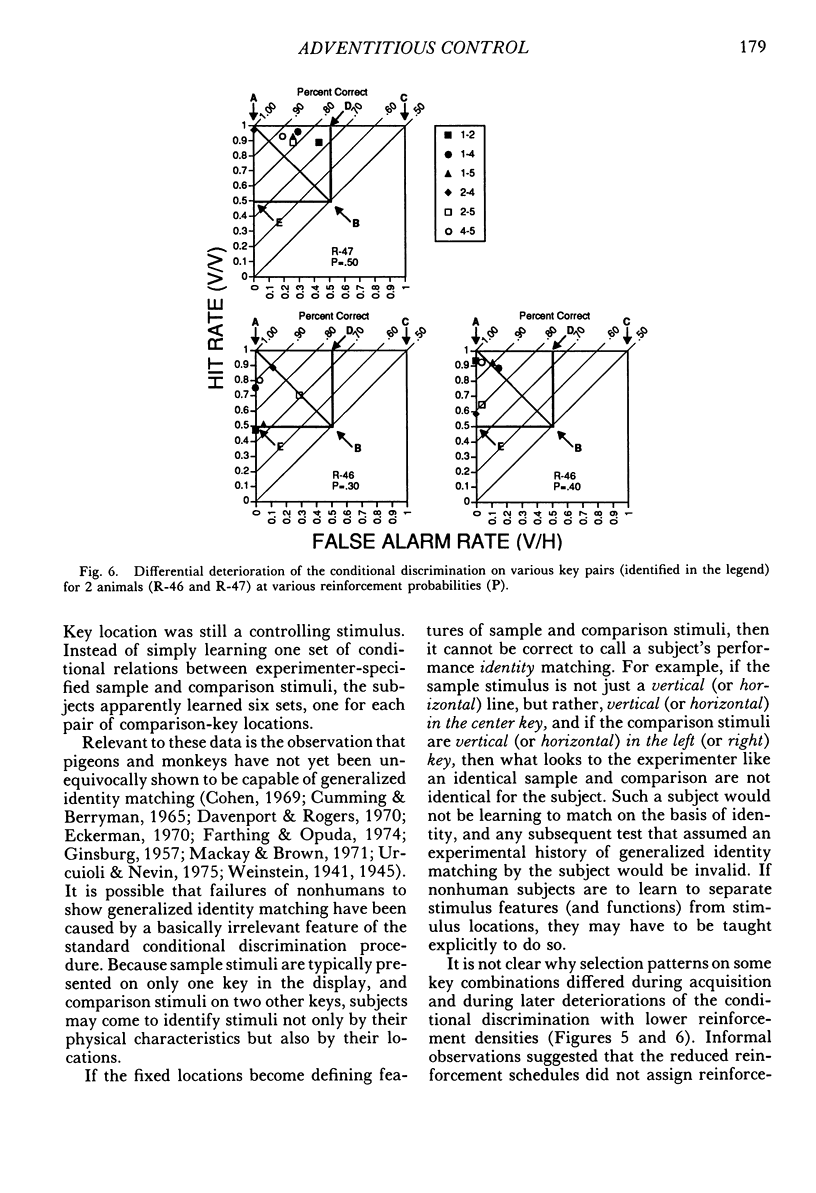
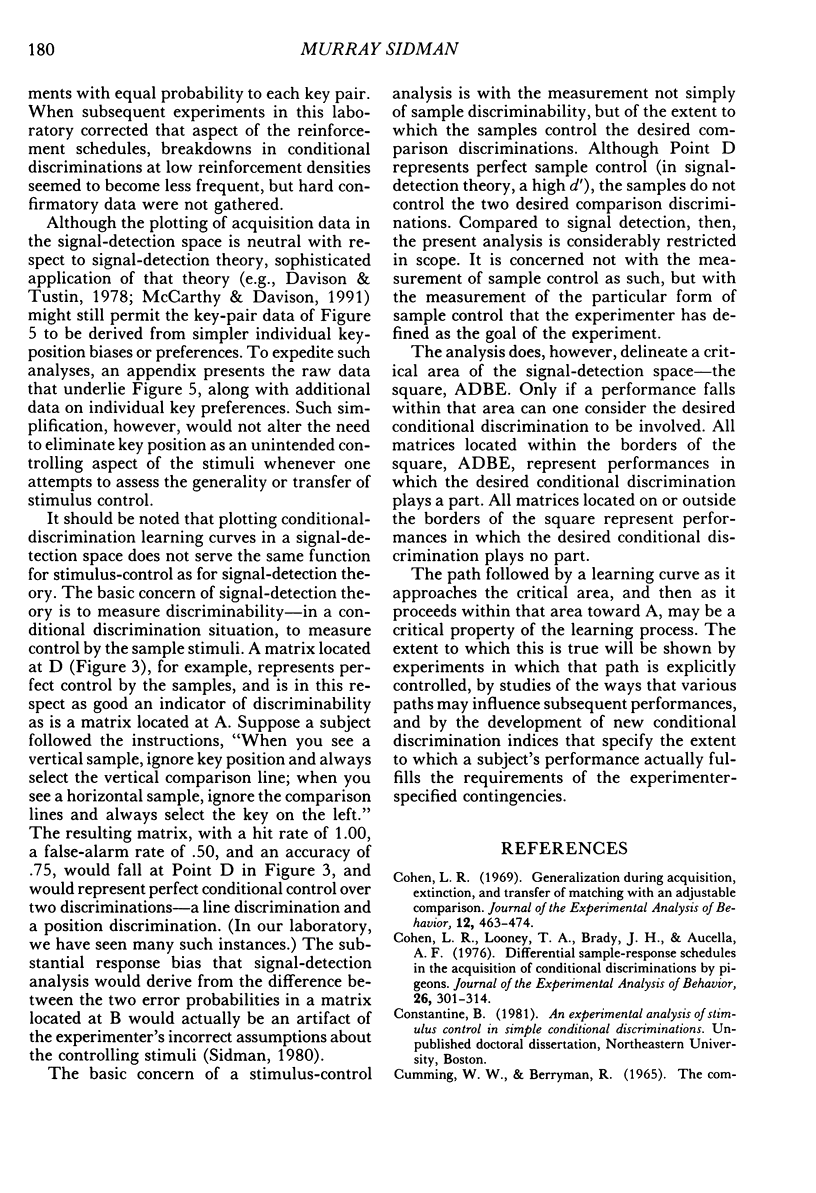
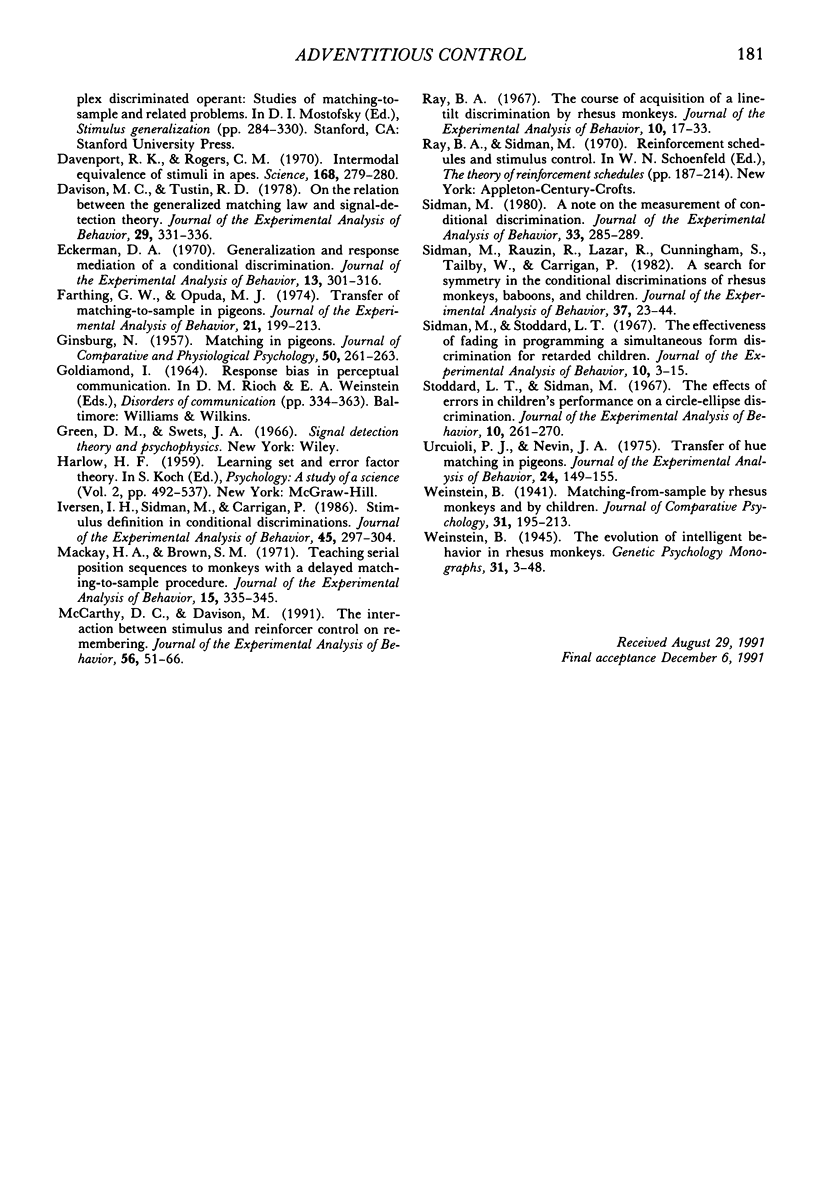
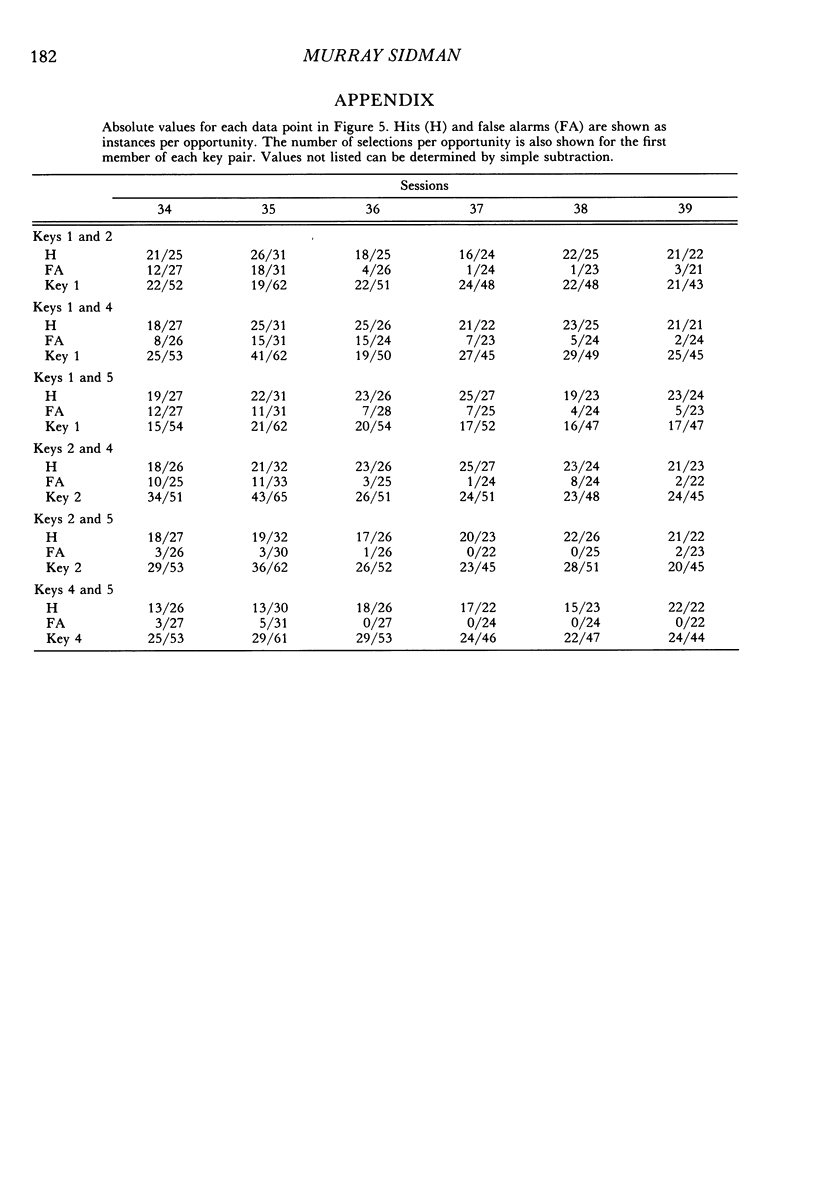
Selected References
These references are in PubMed. This may not be the complete list of references from this article.
- Cohen L. R. Generalization during acquisition, extinction, and transfer of matching with an adjustable comparison. J Exp Anal Behav. 1969 May;12(3):463–474. doi: 10.1901/jeab.1969.12-463. [DOI] [PMC free article] [PubMed] [Google Scholar]
- Cohen L. R., Looney T. A., Brady J. H., Aucella A. F. Differential sample response schedules in the acquisition of conditional discriminations by pigeons. J Exp Anal Behav. 1976 Sep;26(2):301–314. doi: 10.1901/jeab.1976.26-301. [DOI] [PMC free article] [PubMed] [Google Scholar]
- Davenport R. K., Rogers C. M. Intermodal equivalence of stimuli in apes. Science. 1970 Apr 10;168(3928):279–280. doi: 10.1126/science.168.3928.279. [DOI] [PubMed] [Google Scholar]
- Davison M. C., Tustin R. D. The relation between the generalized matching law and signal-detection theory. J Exp Anal Behav. 1978 Mar;29(2):331–336. doi: 10.1901/jeab.1978.29-331. [DOI] [PMC free article] [PubMed] [Google Scholar]
- Eckerman D. A. Generalization and response mediation of a conditional discrimination. J Exp Anal Behav. 1970 May;13(3):301–316. doi: 10.1901/jeab.1970.13-301. [DOI] [PMC free article] [PubMed] [Google Scholar]
- Farthing G. W., Opuda M. J. Transfer of matching-to-sample in pigeons. J Exp Anal Behav. 1974 Mar;21(2):199–213. doi: 10.1901/jeab.1974.21-199. [DOI] [PMC free article] [PubMed] [Google Scholar]
- GINSBURG N. Matching in pigeons. J Comp Physiol Psychol. 1957 Jun;50(3):261–263. doi: 10.1037/h0047252. [DOI] [PubMed] [Google Scholar]
- Iversen I. H., Sidman M., Carrigan P. Stimulus definition in conditional discriminations. J Exp Anal Behav. 1986 May;45(3):297–304. doi: 10.1901/jeab.1986.45-297. [DOI] [PMC free article] [PubMed] [Google Scholar]
- Mackay H. A., Brown S. M. Teaching serial position sequences to monkeys with a delayed matching-to-sample procedure. J Exp Anal Behav. 1971 May;15(3):335–345. doi: 10.1901/jeab.1971.15-335. [DOI] [PMC free article] [PubMed] [Google Scholar]
- McCarthy D. C., Davison M. The interaction between stimulus and reinforcer control on remembering. J Exp Anal Behav. 1991 Jul;56(1):51–66. doi: 10.1901/jeab.1991.56-51. [DOI] [PMC free article] [PubMed] [Google Scholar]
- Ray B. A. The course of acquisition of a line-tilt discrimination by rhesus monkeys. J Exp Anal Behav. 1967 Jan;10(1):17–33. doi: 10.1901/jeab.1967.10-17. [DOI] [PMC free article] [PubMed] [Google Scholar]
- Sidman M. A note on the measurement of conditional discrimination. J Exp Anal Behav. 1980 Mar;33(2):285–289. doi: 10.1901/jeab.1980.33-285. [DOI] [PMC free article] [PubMed] [Google Scholar]
- Sidman M., Rauzin R., Lazar R., Cunningham S., Tailby W., Carrigan P. A search for symmetry in the conditional discriminations of rhesus monkeys, baboons, and children. J Exp Anal Behav. 1982 Jan;37(1):23–44. doi: 10.1901/jeab.1982.37-23. [DOI] [PMC free article] [PubMed] [Google Scholar]
- Sidman M., Stoddard L. T. The effectiveness of fading in programming a simultaneous form discrimination for retarded children. J Exp Anal Behav. 1967 Jan;10(1):3–15. doi: 10.1901/jeab.1967.10-3. [DOI] [PMC free article] [PubMed] [Google Scholar]
- Stoddard L. T., Sidman M. The effects of errors on children's performance on a circle-ellipse discrimination. J Exp Anal Behav. 1967 May;10(3):261–270. doi: 10.1901/jeab.1967.10-261. [DOI] [PMC free article] [PubMed] [Google Scholar]
- Urcuioli P. J., Nevin J. A. Transfer of hue matching in pigeons. J Exp Anal Behav. 1975 Sep;24(2):149–155. doi: 10.1901/jeab.1975.24-149. [DOI] [PMC free article] [PubMed] [Google Scholar]


